The Genesis G80 luxury sedan kickstarted the South Korean offshoot brand in Australia five years ago (under the Hyundai Genesis nameplate). Now, it's available in its most silent version yet as a full electric vehicle.
The Genesis Electrified G80 isn’t eligible for the fringe benefits tax (FBT) exemption for electric fleets and novated leases, and is $30,800 dearer than its petrol equivalent.
Yet, the Genesis Electrified G80 presents a value luxury EV option for businesses to improve their Environmental, Social and Governance (ESG) and wider corporate social responsibility (CSR), dramatically cut running costs, and drive a more unique badge than a Mercedes-Benz EQE sedan.
The Genesis Electrified G80 is offered in one flagship Luxury Package variant in Australia with all features included as standard, priced from $147,000 before on-road costs and including the luxury car tax.
Our tester had the EV-exclusive Matira Blue exterior colour optioned ($2000) and the Forest Blue and Brown interior with Brown Ash wood trim (no cost extra).
zecar rating
Good points
- Comfortable plush ride
- Sharp upmarket looks
- Good efficiency for its size
Could be better
- Compromised practicality
- Manual rear window sunshades only
- No interior V2L
EDITOR’S NOTE: The test vehicle was provided by Genesis Australia for a seven-day independent evaluation.
Electrified G80 Design
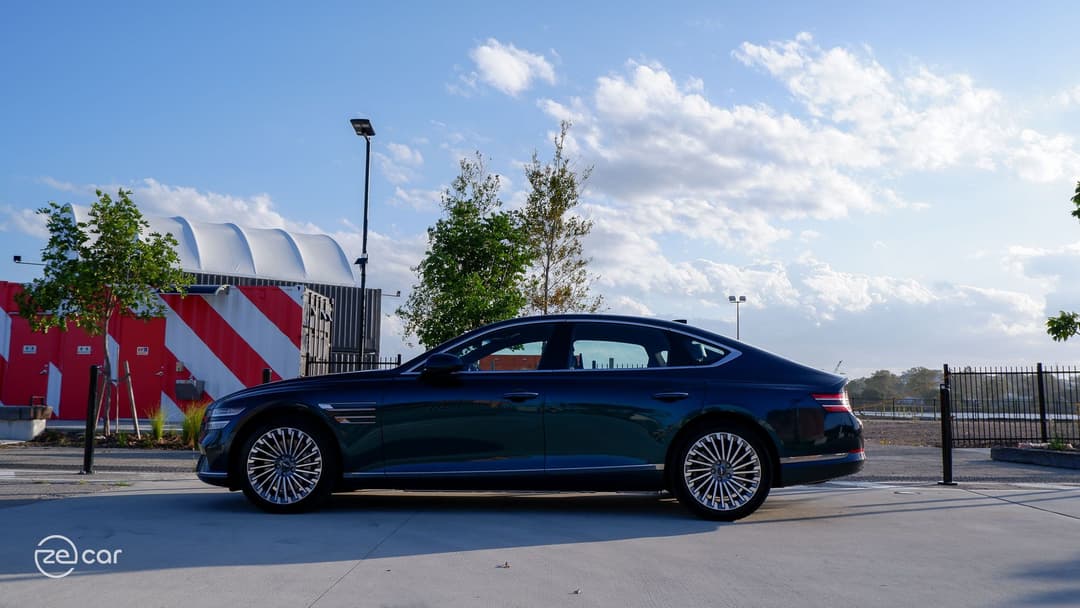
The Genesis Electrified G80 carries the same sleek design as its engine-powered sibling.
It arguably wears the South Korean marque’s design language the best in the line-up with a sloping sedan rear, distinct split LED head- and tail-lights which flow on the same level with the double side indicators, chrome side skirts and front bumper, and two creases on the front bonnet to make the Genesis wing logo look like it's flying.
This all-electric model gains exclusive touches like the sharp-looking 19-inch multi-spoke alloy wheels with a silver brake calliper, a closed-off G-matrix crest grille that secretly hides the front charging flap, and revised front- and rear bumpers. Only the electric G80 can be optioned with this Matira Blue ($2000) exterior colour which, although it’s the same price as matte shades, is an attractive unique turquoise mix that glimmers under the sun.
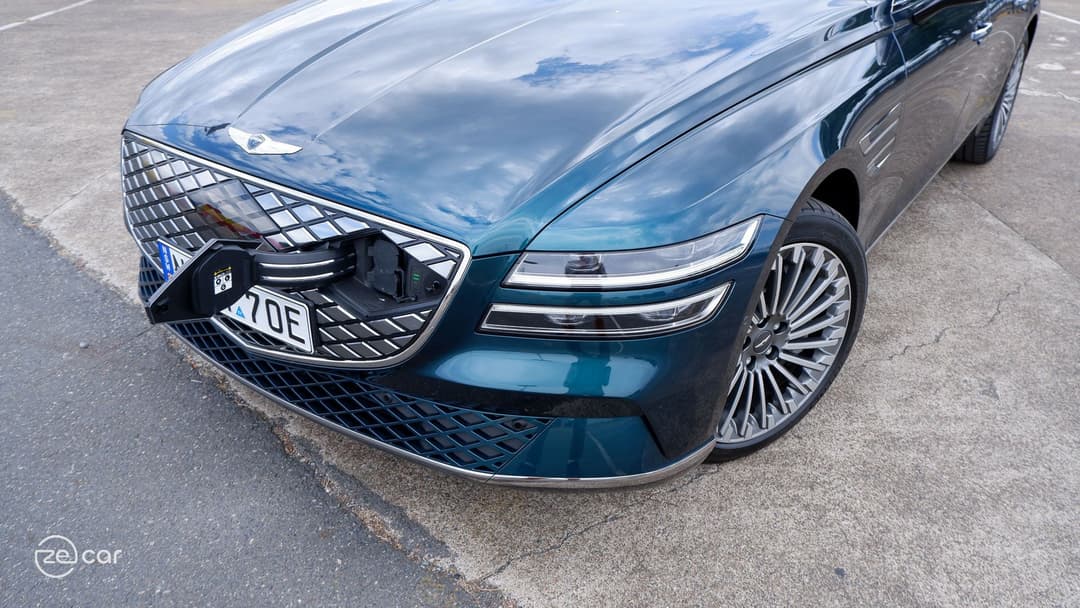
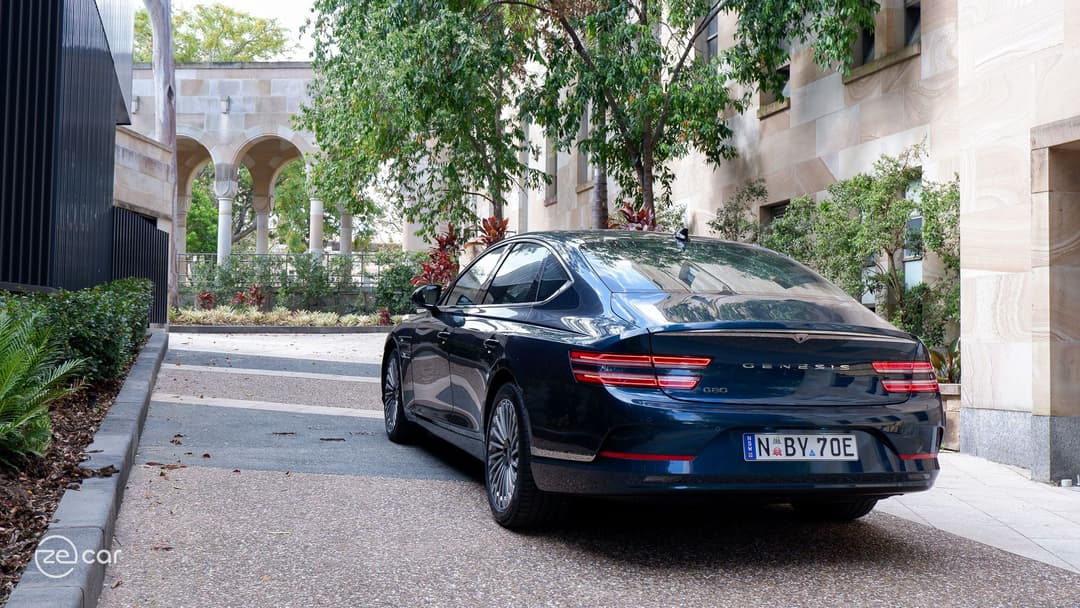
It looks far more distinctive and worthy of its luxury badge than the awkward GV60 electric crossover. Plus, the fact that any Genesis is rare on Australian roads today made many people fix their eyes at the front logo (no, it’s not a Bentley).
The upmarket design continues into the cabin with our tester’s Forest Blue option (no cost extra) extending from the plush Nappa leather seats to the seatbelts and dashboard, while the dark brown dark brown complements it with piping on the seats, soft floor carpeting up to the centre tunnel, upper and lower door cards, suede headlining, and steering wheel rim.
The dark Brown Ash wood trims are most impressive. It is applied across the width of the dashboard, side doors, centre console, and rear armrest. Genesis says it uses leftover wood from furniture production to fit with the sustainable EV theme and each panel has its own unique grain and texture.
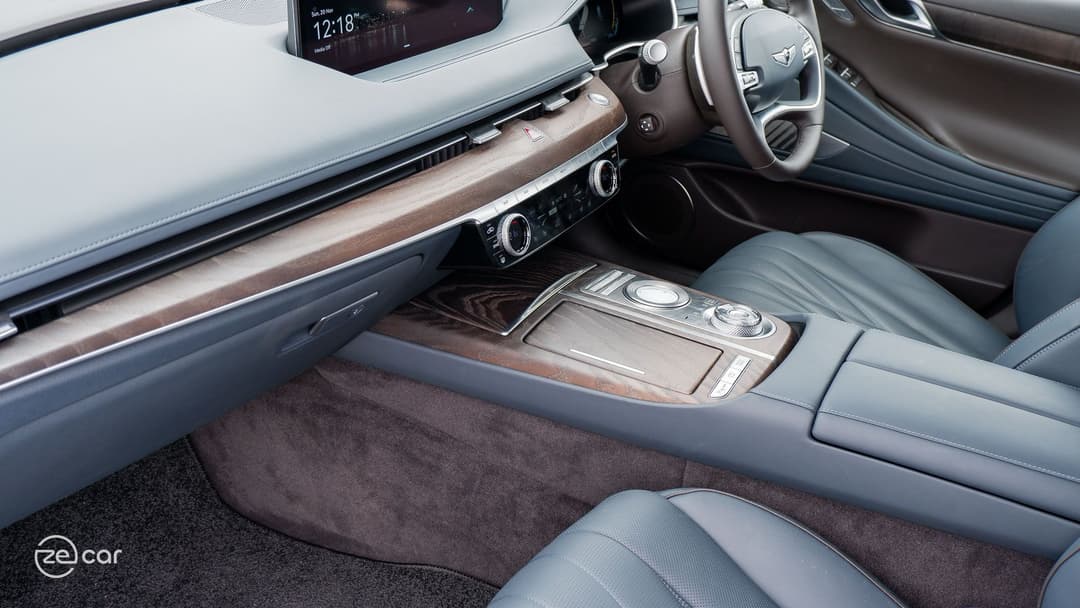
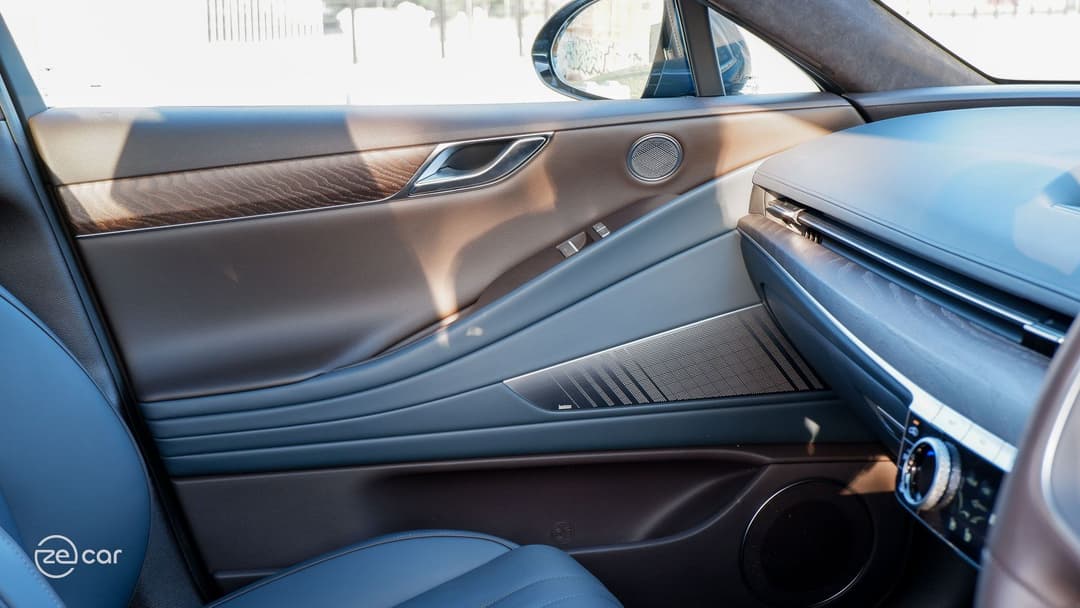
The ultrawide infotainment display is in its own dip and set backwards to be more in line with the driver’s line of sight, and textured knurlings are employed across the drive selector, rotary controller, dials and steering wheel stalks. Interestingly, the front door’s sloping armrest and window switches into the dash is reminiscent of the Kia Niro EV small SUV, while the wave-like lines remind me of the BYD Atto 3 dashboard especially in this blue.
But while it’s a premium interior with soft leather materials throughout, the silver buttons, switches and accents are not real metal; they’re still painted plastic which is disappointing given its lofty $150K price tag. It also uses the same cheap-looking overhead lights and sunglasses holder as the GV60.
However, they do feel solid and damped with the cheese grater-like Lexicon speaker grilles and satisfyingly clicky paddle shifters doing a mostly more convincing job of imitating metal, unlike the GV60 we tested.
Electrified G80 Practicality
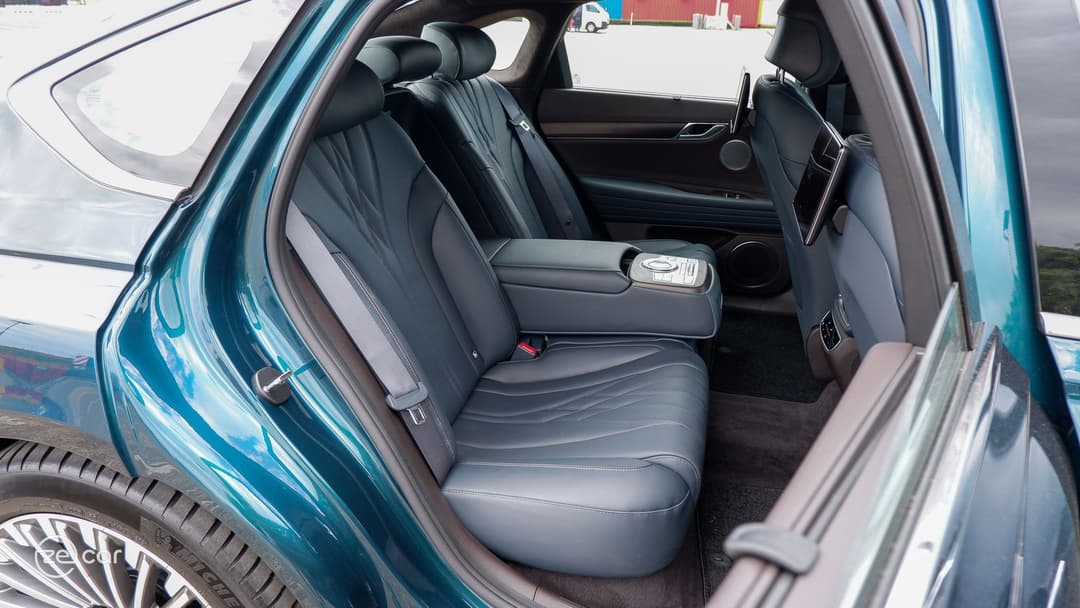
The electric Genesis G80 has a 354-litre boot with a ski-through opening into the rear row. The rear seats can’t fold down, nor does it offer a frunk.
It’s 70-litres less than its petrol equivalent due to the batteries and rear electric motor creating a large protruding hump at the back. Genesis tries to hide it by attaching the first aid and roadside assistance kit above the hump using very strong velcro.
The carpeted boot doesn’t have bag hooks, but offers a luggage net and two netted storage pockets on each side. Under the floor, you can store your charging cable and tyre inflation kit, but underneath the foam is a deep Tesla-like well where the 12-volt auxiliary battery sits – another sign of a compromised electric vehicle on an internal combustion engine platform.
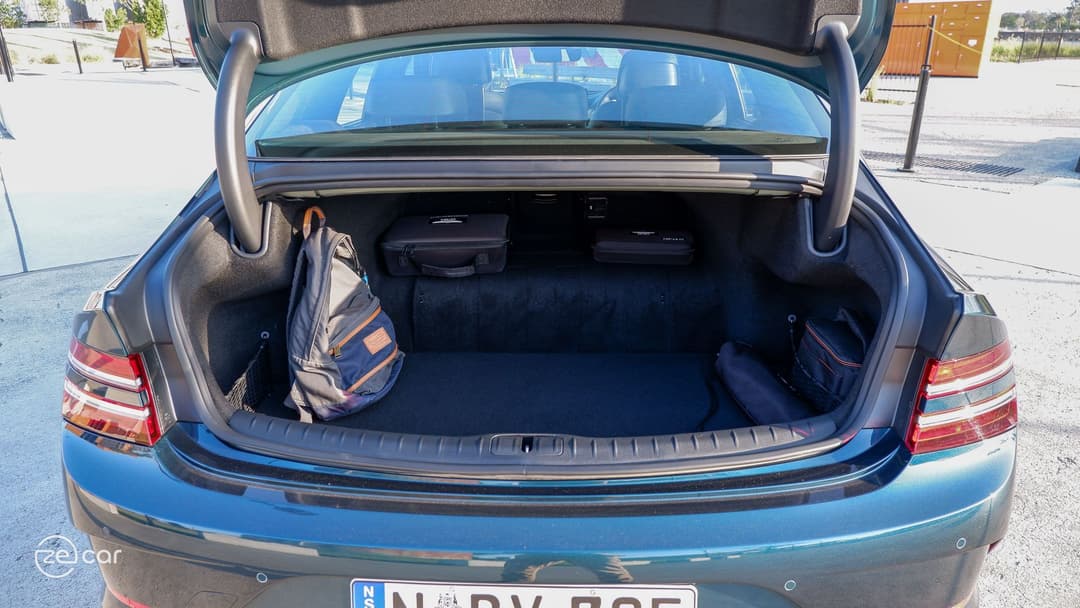
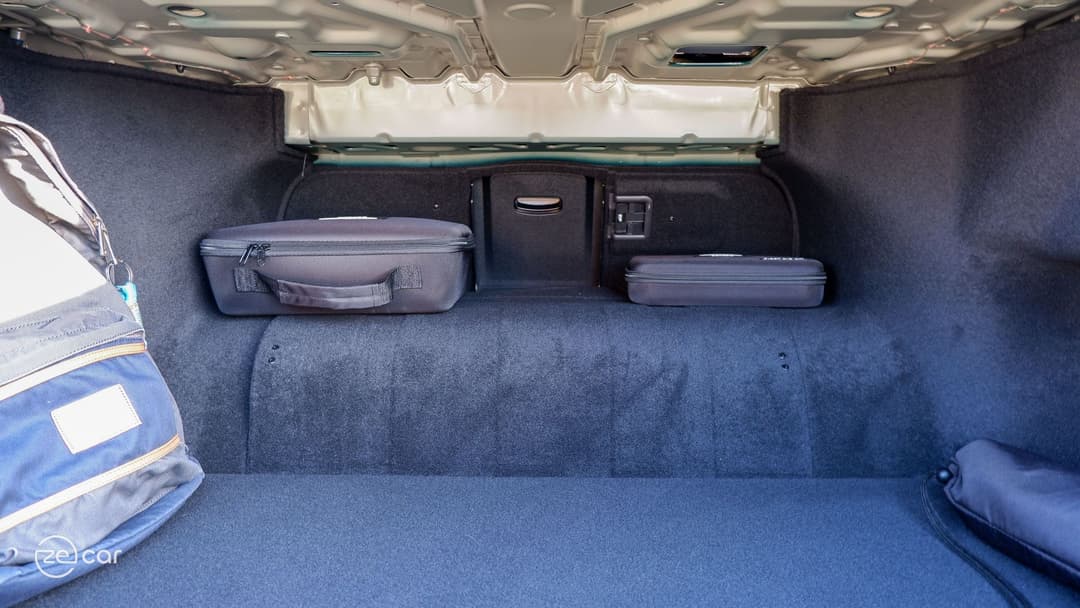
Despite all this, there’s still enough space to fit bags and a large suitcase. Due to the sedan opening, anything able to be stored at the hump (if there wasn’t one) would be deep and hard to reach anyway.
The hands-free power tailgate opens and closes quickly, the button to open it is a neatly discreet crest shape in the middle of the boot lid’s chrome line, and Genesis offers a lock button when closing.
The Electrified G80 is designed for chauffeuring passengers, but it’s compromised in the rear row.
Due to the batteries under the floor and a low seating position, passenger’s legs are perched up higher (like sitting above the rear wheels in a bus). Depending on the height of the front two seats, you can stretch your feet underneath to offset it. It’s acceptable for short trips, but can be uncomfortable for longer rides.
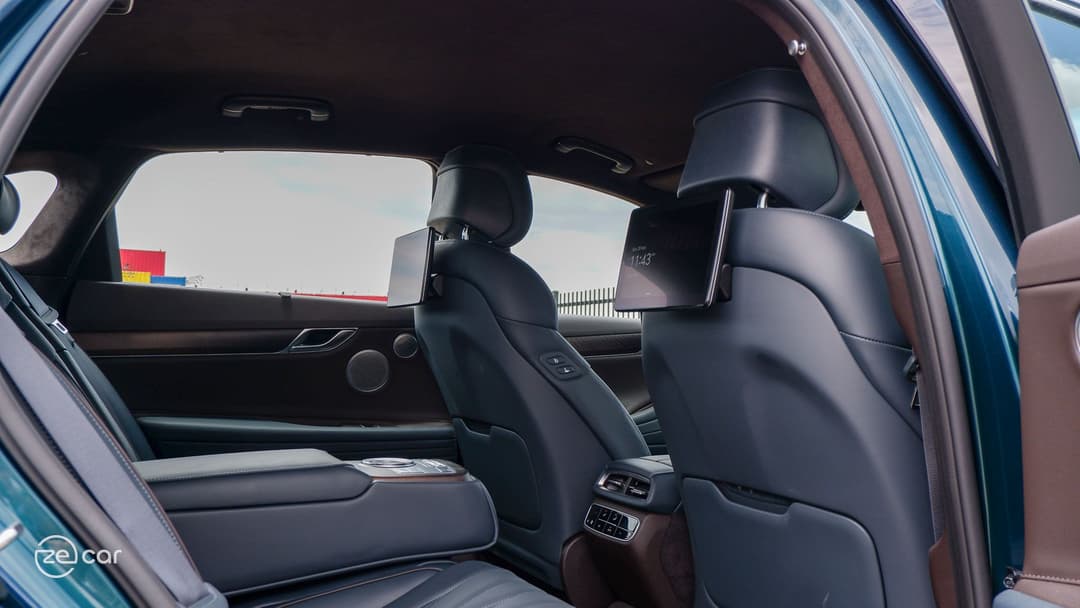
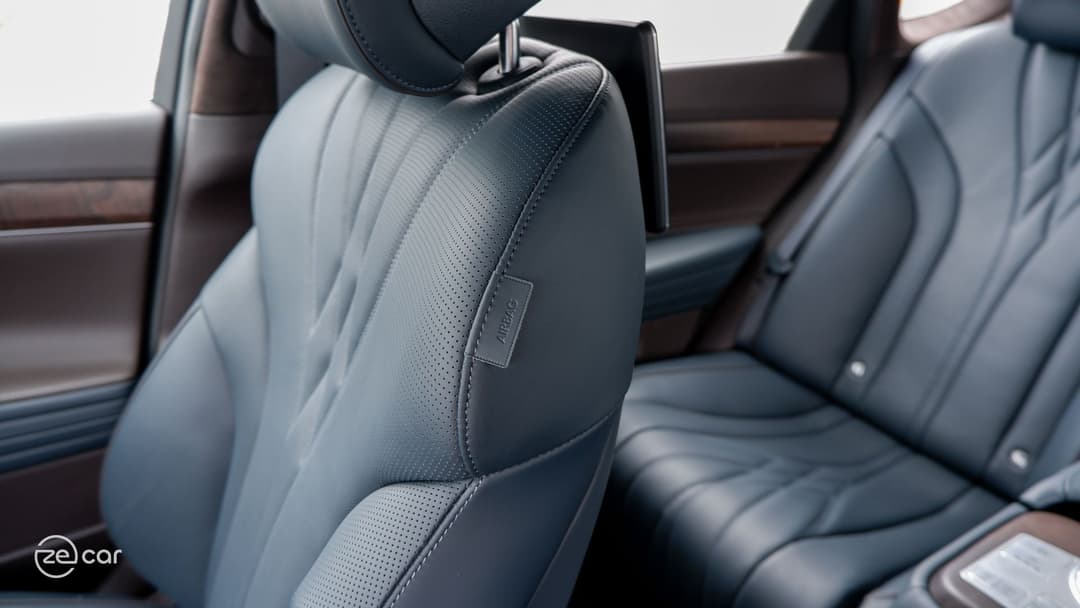
The 3010mm wheelbase results in good leg- and head-room, but since it's just 10mm more than the Hyundai Ioniq 5, one wonders that a dedicated EV platform would liberate the electric G80 further.
The Nappa leather seats are large and comfortable with three-stage heating functionality, though sitting in the middle seat is uncomfortably higher and eerily SUV-like due in part to the slightly protruding centre tunnel.
Rear row passengers are also treated to an electrically retracting rear sunshade blind, which can be toggled via the fold-down centre armrest controls at the rear or the overhead button from the front. It effectively filters UV rays; the rear window view is still visible for the driver when it’s enabled, and automatically lowers when reversing.
Disappointingly, the rear side window sunshades are still manually operated by the passenger, especially given it’s quite fiddly to hook it into place. For a chauffeur-focused vehicle, this is a clear oversight.
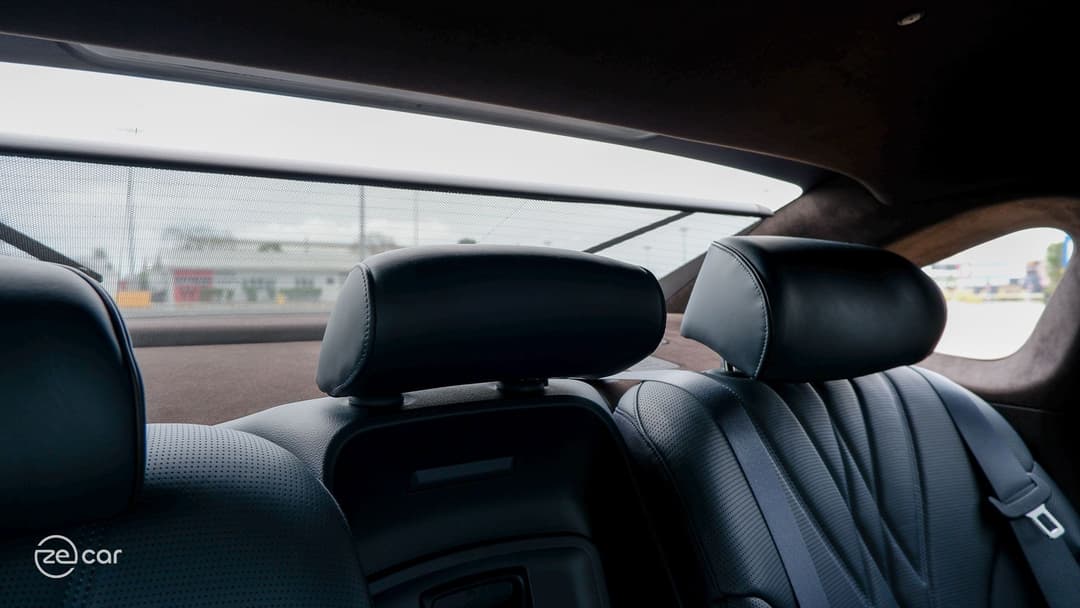

There are, however, soft close doors, and three-zone climate control so rear passengers can control their temperature via the physical buttons at the centre console air vents or the rear displays. The fold-down centre armrest is also home to a storage tray and two pop-out floating cup holders that are quite flimsy.
The plush Nappa leather seats continue at the front which have both heating and ventilation functionality, plus the driver has massaging and sensors on the adjustment toggles which show the switch is being touched on the touchscreen.
Meanwhile, the centre console cup holders and Qi wireless charging pad can be closed off with wooden covers, though the latter is quite tight to fit a smartphone and charging cable. Even the lower door pockets are in a soft leather-like material, but lack felt-lining that’s found within the lockable glove box.
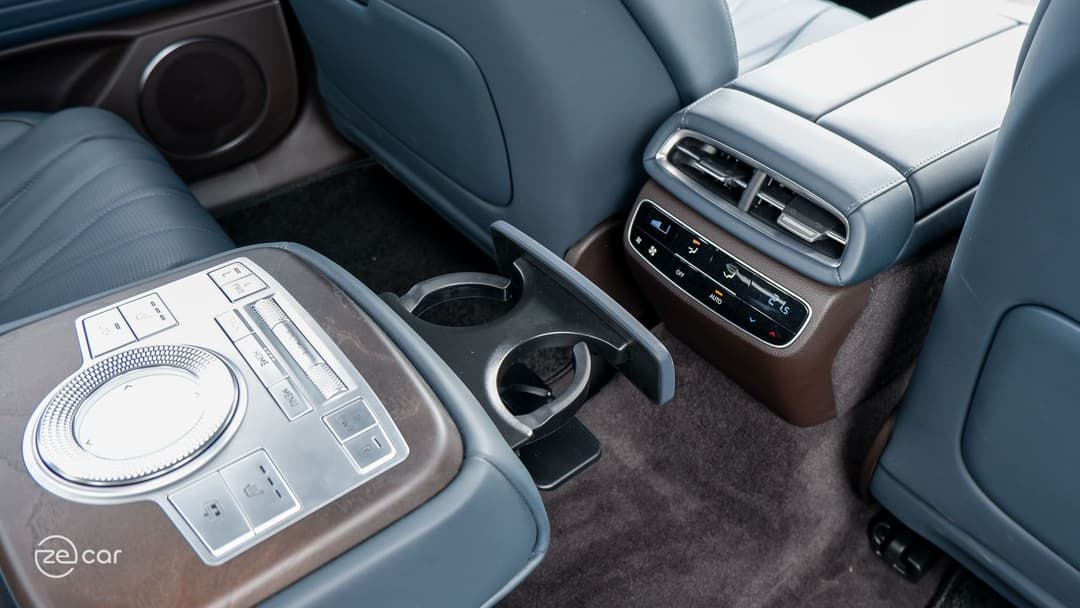
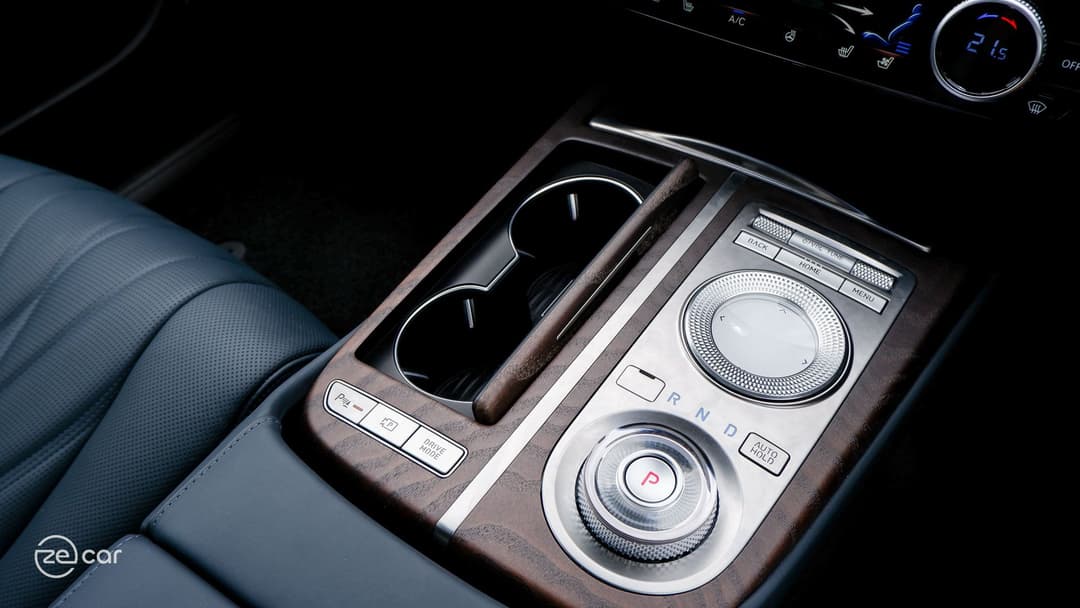
Unfortunately, while the key fob situation is improved compared to the Genesis GV60 we tested, it is still an inconvenience. The physical backup key is built-in within the more traditional rubberised proximity key, but if you need it to unlock/lock the glove box or doors if the battery goes flat, Genesis recommends using a flathead screwdriver and soft cloth cover to pry the key open in order to access it. This is unlike most other vehicles from the automaker, like the Kia EV6 and Hyundai Ioniq 5, which can pull out the physical key by pressing a button on the fob.
A consequence of the unique solar panel roof is the lack of a glass sunroof, which makes the interior feel darker especially with our tester’s dark brown suede headliner.
Electrified G80 Technology
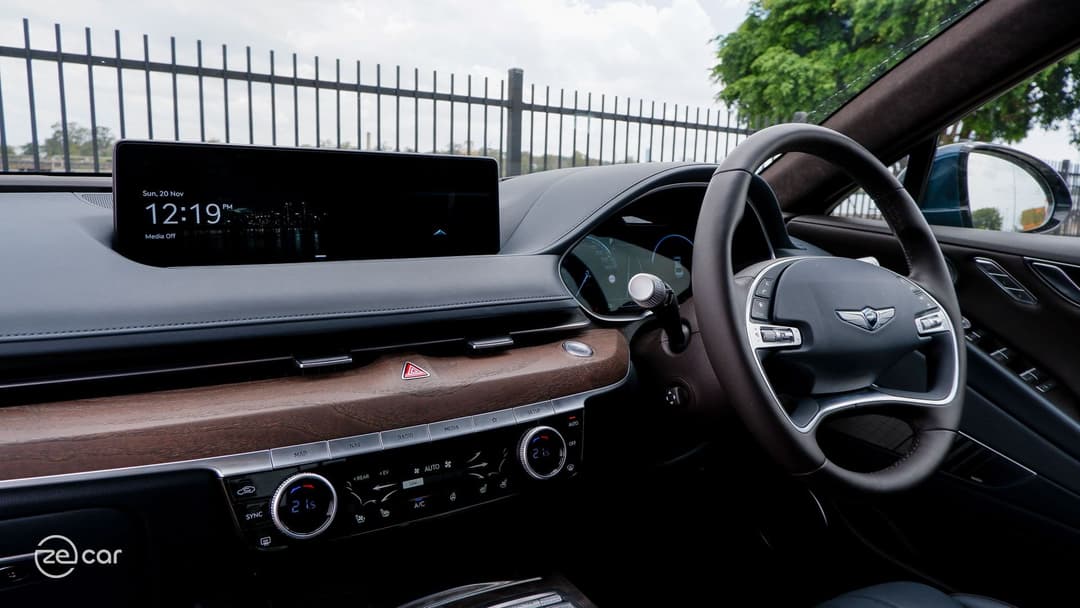
The Genesis Electrified G80 features a 14.5-inch ultrawide infotainment screen with a 6-inch climate control display, full digital driver’s instruments and twin 9.2-inch rear seat entertainment screens.
It isn’t powered the latest version software found on the GV60 crossover, but still offers widescreen wired Apple CarPlay and wired Android Auto, augmented reality (AR) navigation (shown on the central screen only), and can be controlled via a flat rotating dial on the centre console with handwriting recognition.
That’s unlike the newer GV60 and Electrified GV70 EVs that have a protruding dial, but I found this G80 implementation to be more ergonomic and I used it more often due to the screen being set back further.
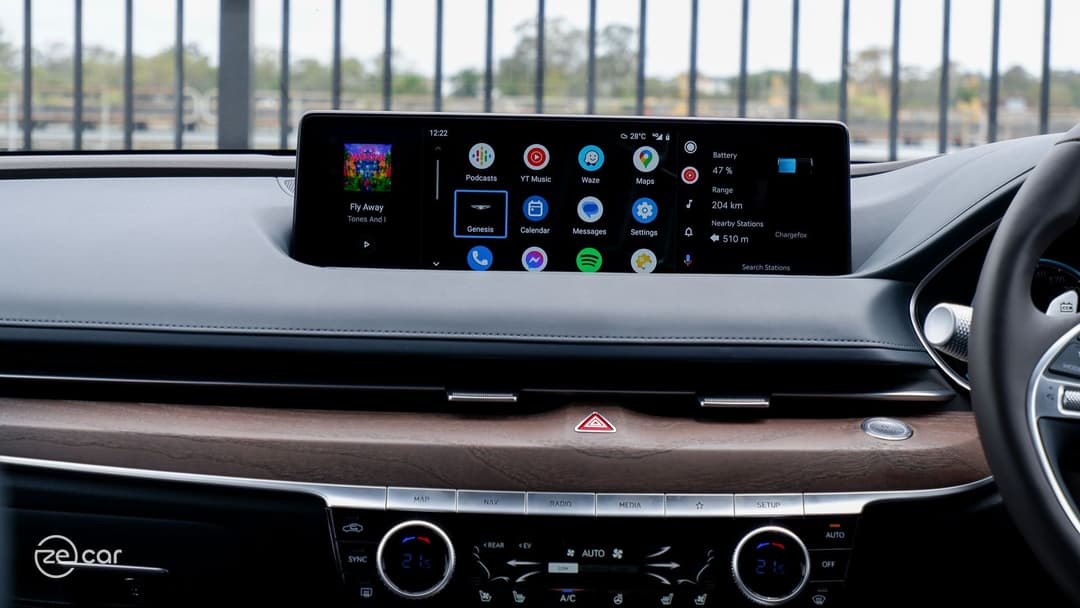
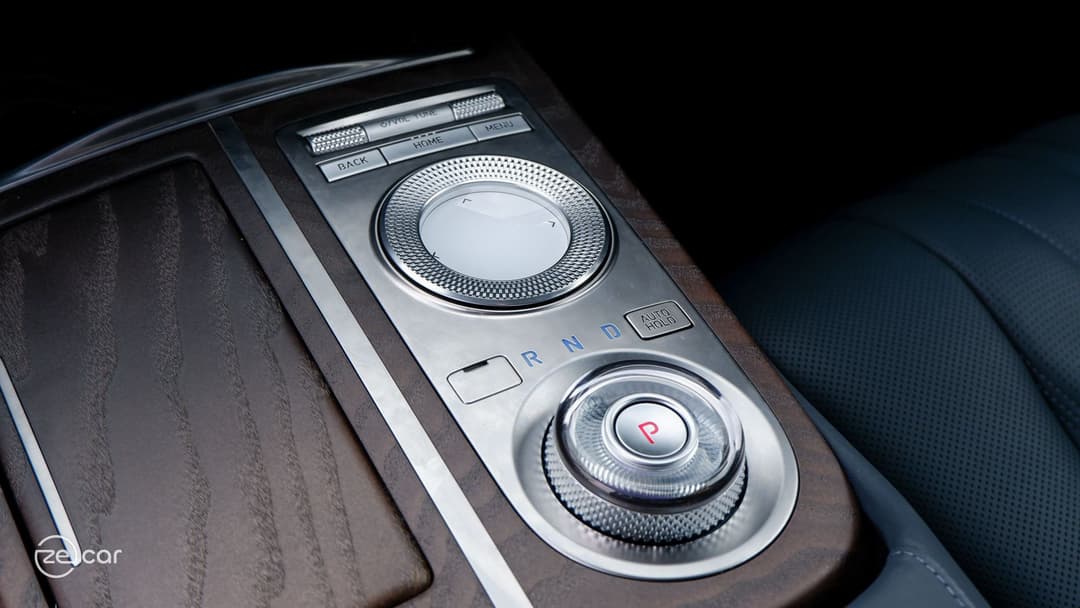
It’s always fixed on dark mode, the fonts aren’t as large and there aren’t as many slick animations, though it uniquely presents owners with a different wallpaper every time the vehicle is turned on and the ultrawide aspect ratio means it can always display a widget on the side (like the remaining battery or analogue clock) even when using smartphone projection or the 360-degree camera.
Furthermore, the climate control is managed via a dedicated 6-inch display flanked by temperature dials and physical buttons for basic shortcuts. Like the infotainment, it always shows a black background, resulting in the text and touch targets being somewhat difficult to see and operate while driving. There’s even separate pages to control the rear row and EV-specific functions. Genesis offsets it by including haptic touch feedback, though.
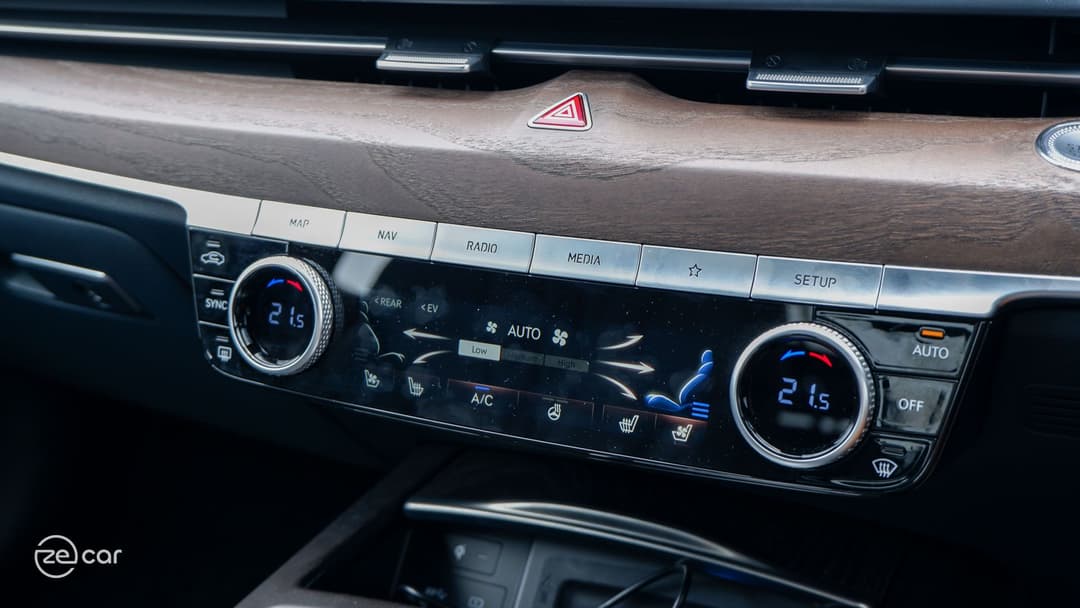
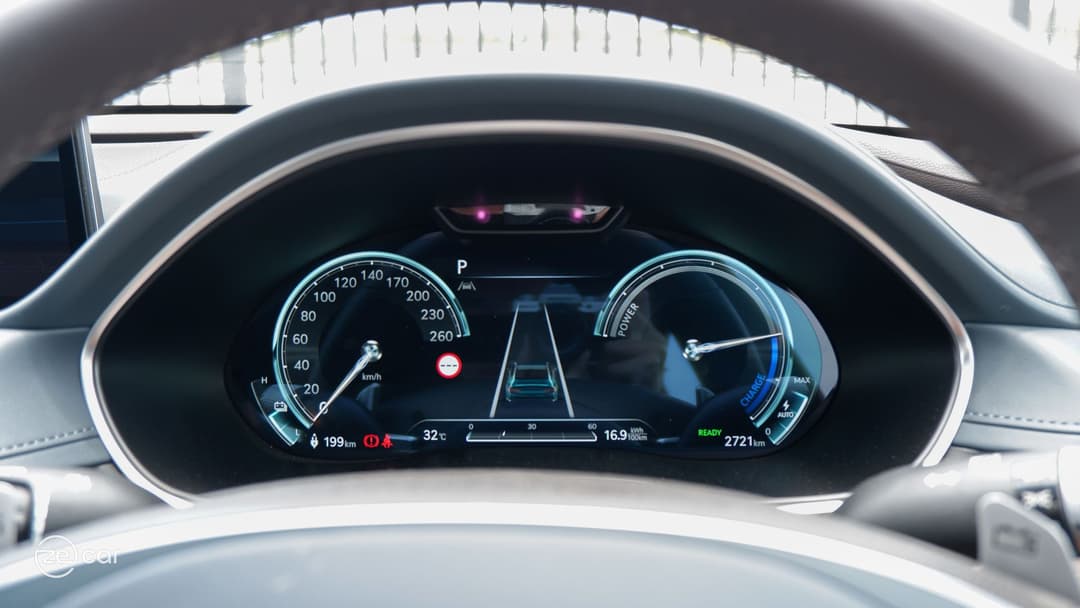
Ahead of the driver is a fully digital instrument cluster screen presented in a fairly traditional analogue dial setup. It offers a three-dimensional view by making specific elements more prominent, but is more of a party trick and turning the effect on dims the brightness a little. The head-up display legibly projects the digital speedometer onto the windscreen.
Although Kia and Hyundai are starting to deploy internet connectivity and remote mobile app features, it’s still lacking on all Genesis models.
Attached to the front seat headrests are two identical 9.2-inch displays, allowing rear row passengers to control the music, set a navigation destination, view front and rear camera views, and even change settings like ambient lighting.
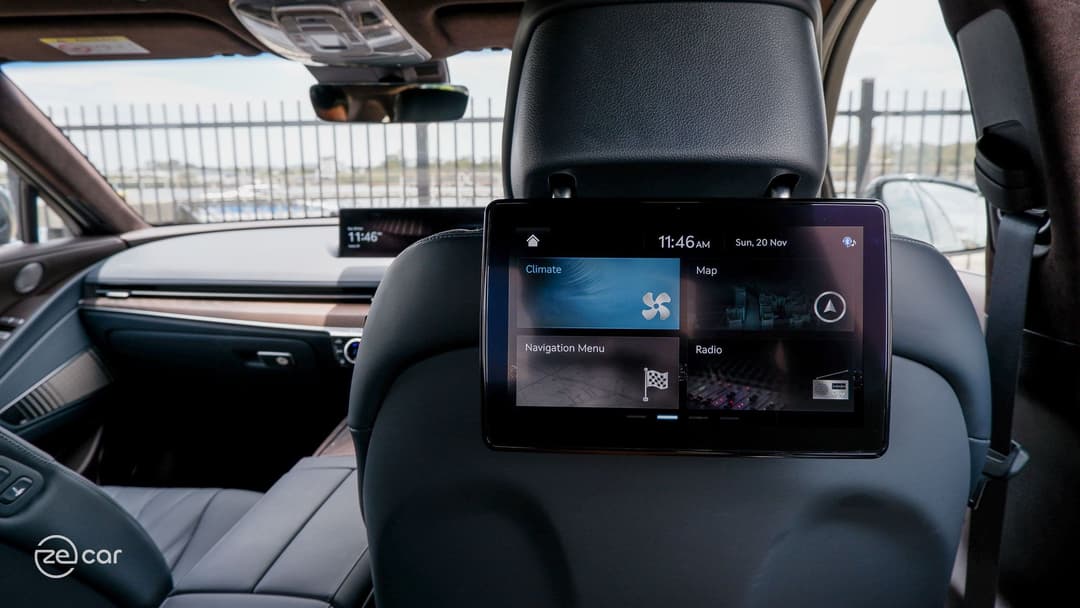
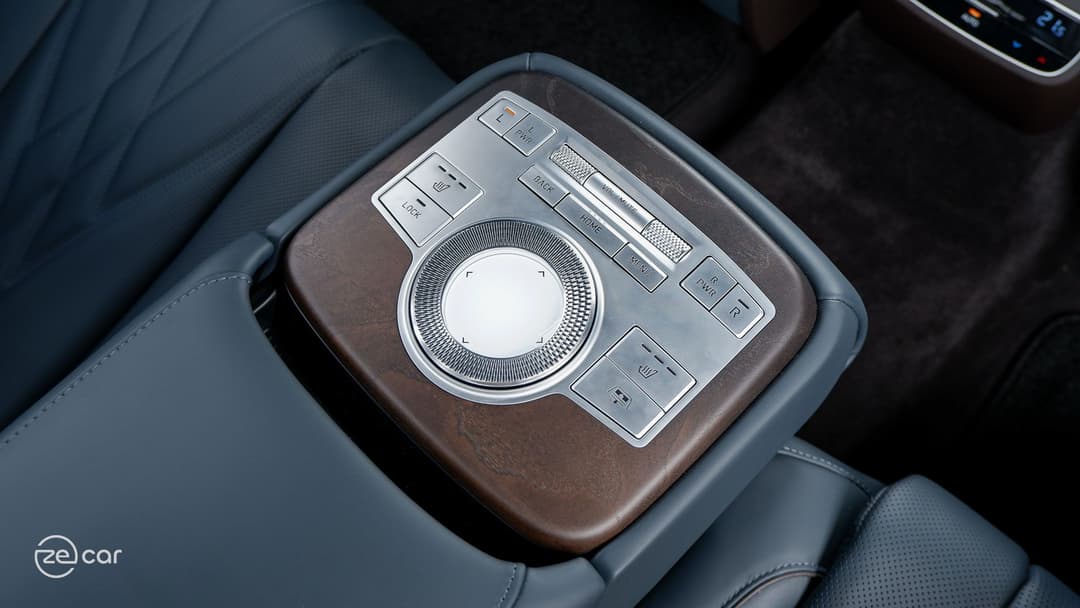
It’s powered by the same user interface as the central infotainment system and can be operated via direct touch or the fold-down armrest with the single controller dial for one screen. The latter also features a 3.5mm headphone jack for listening to audio privately and a USB charging port.
Unfortunately, the electric G80 sedan still uses the older USB-A port standard throughout the cabin and doesn’t have an interior vehicle-to-load (V2L) power plug to allow passengers to fast charge their laptops or power other devices.
The included 20-speaker Lexicon by Harman setup performs well with a wide soundstage to fill the large interior.
Electrified G80 Safety Assist
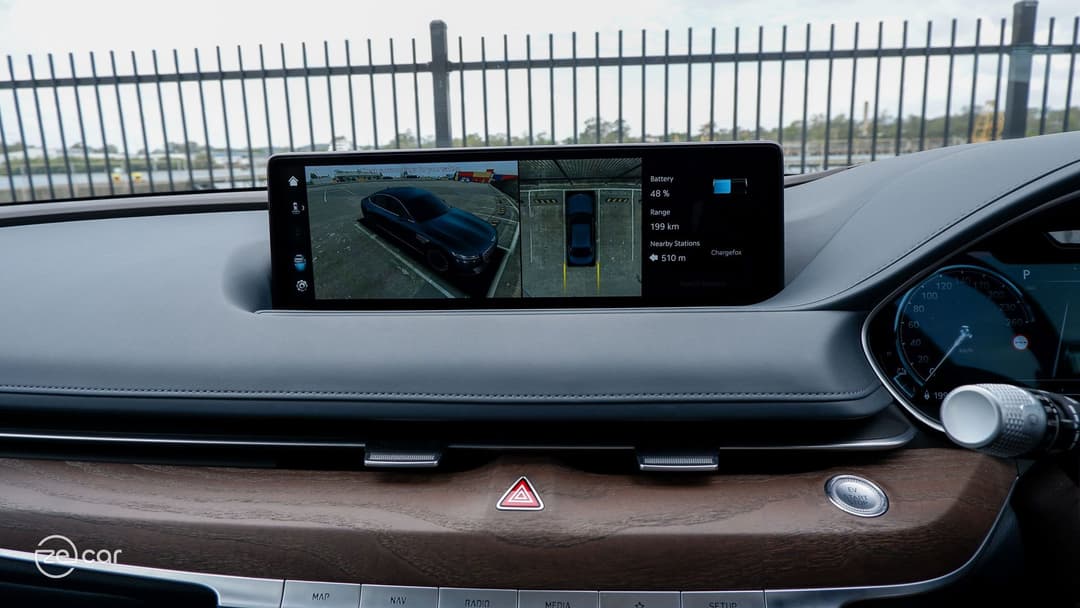
The Genesis Electrified G80 comes with a complete suite of active safety assist systems as standard, including auto emergency braking (AEB) with car/pedestrian/cyclist/junction turning detection; blind spot and rear cross collision avoidance assist; lane following and keeping assist; adaptive cruise control; a 360-degree camera; blind spot view cameras; front and rear parking sensors; and more detailed here.
The adaptive cruise control works well when combined with lane centring assist, yet needs driver intervention if the vehicle in front is on a crest or turn.
A slight bugbear is the steering wheel buttons to toggle it are tiny and difficult to press without looking down.
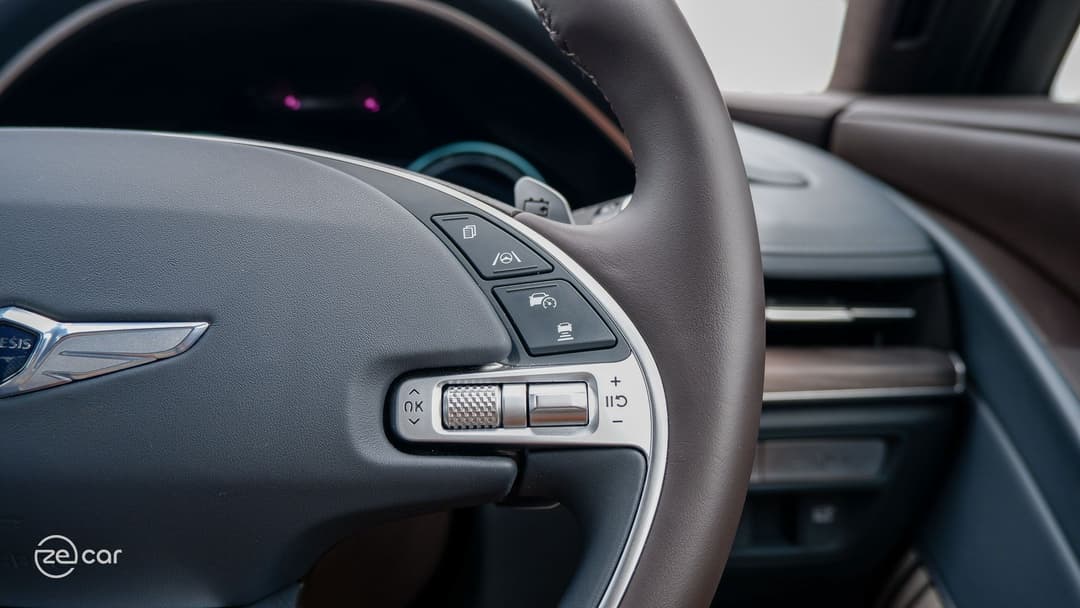
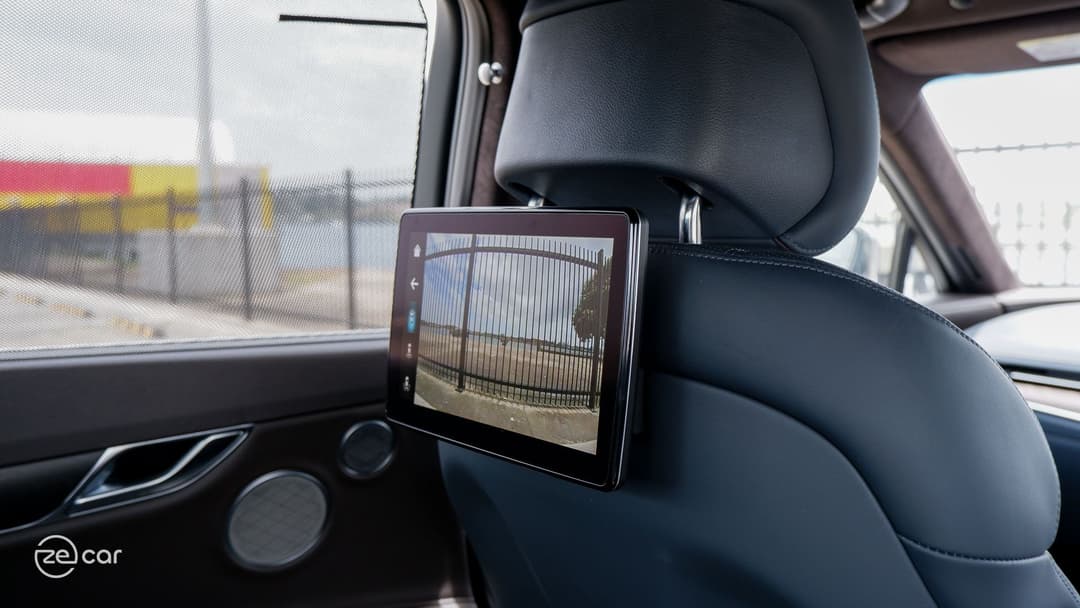
Meanwhile, the 360-degree and blind spot camera quality aren’t as clear as newer models like the Genesis GV60 or Kia EV6, but is still very handy to manoeuvre this 5005mm-long luxury sedan.
At night, the electric G80’s matrix LED headlights operate effectively to avoid dazzling other drivers while keeping on the auto high beams. In my experience, it seems there are more individual pixels able to illuminate and shut-off than the cheaper GV60 crossover.
Electrified G80 Range and Charging
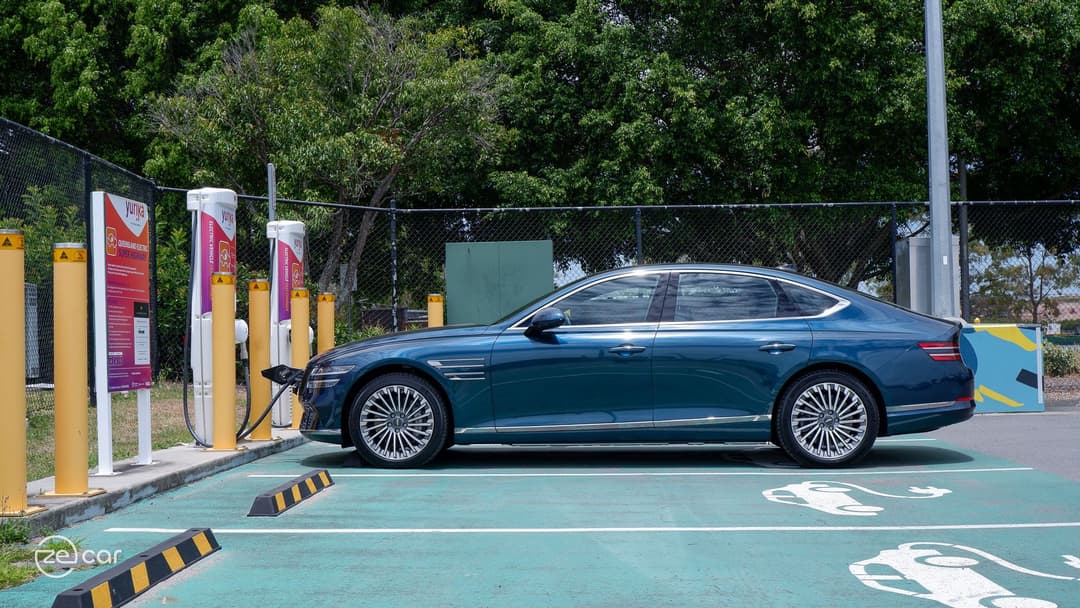
The Genesis Electrified G80 uses a 82.5kWh (usable) battery that can charge at up to 10.5kW AC and 350kW DC rates using a more advanced 800-volt architecture.
In our real-world charging test, the electric G80 filled up from 16 to 80 per cent in just 20 minutes on a 350kW public EV charger.
It only peaked at 188kW DC, but stayed fairly flat at the 170kW range throughout the session to still yield an impressive charging time, given it has an 8kWh bigger net battery than the Genesis GV60 crossover.
This is likely because the upmarket medium sedan was charged on a hot summer-like 35-degree celsius Queensland day with a drive on the highway prior. So, although I set the built-in navigation directions to the charging station, battery pre-conditioning wasn't needed and didn't activate.
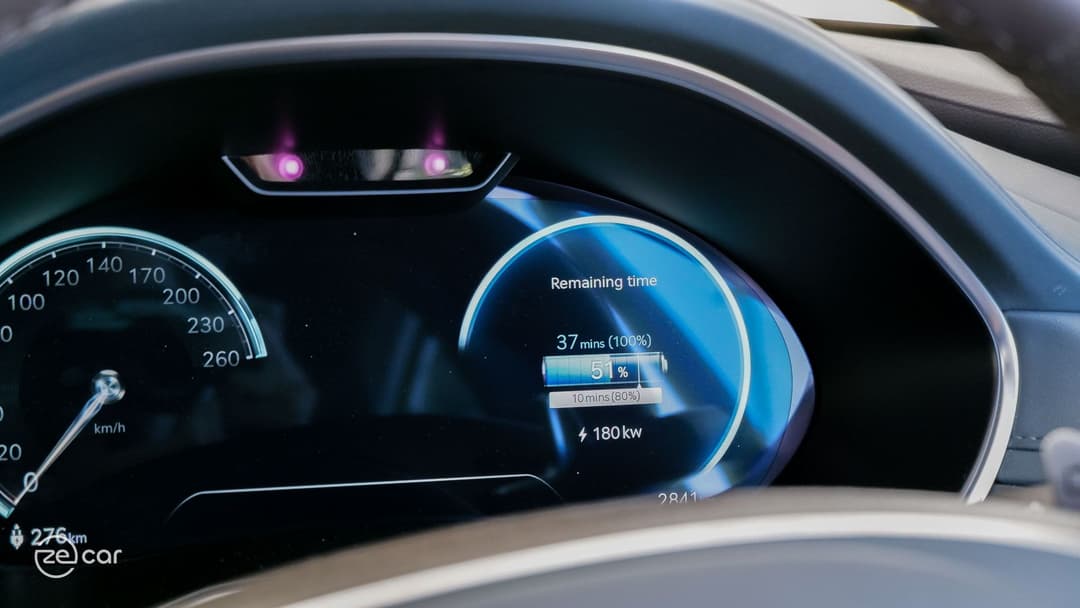
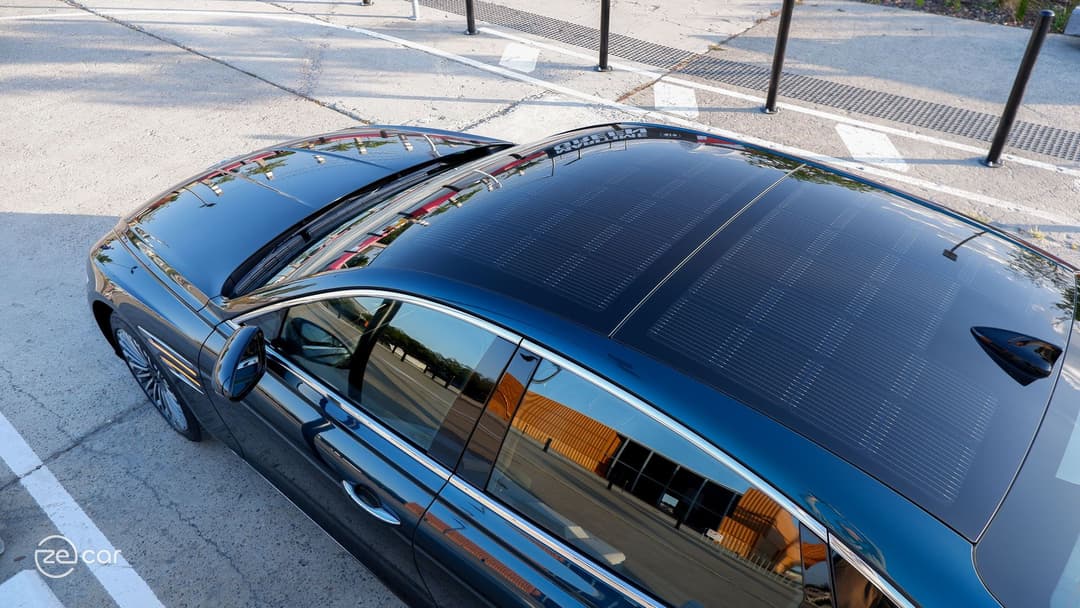
The Electrified G80 uses the standard Type 2/CCS2 charging connector and I like how the flap is hidden secretly behind the diamond crest grille at the front-left side, unlike the Hyundai Kona Electric and Kia Niro EV small SUVs.
Uniquely, it’s the first production electric car in Australia to feature a solar panel roof. In our mostly sunny week with the vehicle parked outside, it generated 6.18kWh of free energy after seven days. The solar roof only charges the 12-volt auxiliary battery that is responsible for electronics and air-conditioning, which in turn reduces the need for the high-voltage large battery pack to sustain it.
This works effectively as I didn’t notice the state-of-charge dropping at the start of each day and the touchscreen shows how much solar it’s receiving (even on a cloudy day it shows one bar). A study by Genesis in Europe claims the solar roof can add up to 1100km driving range across a year. It’s only more fitting in Australia as the nation with one of the highest sun exposures in the world and solar panel adoption per capita in residential and commercial buildings.
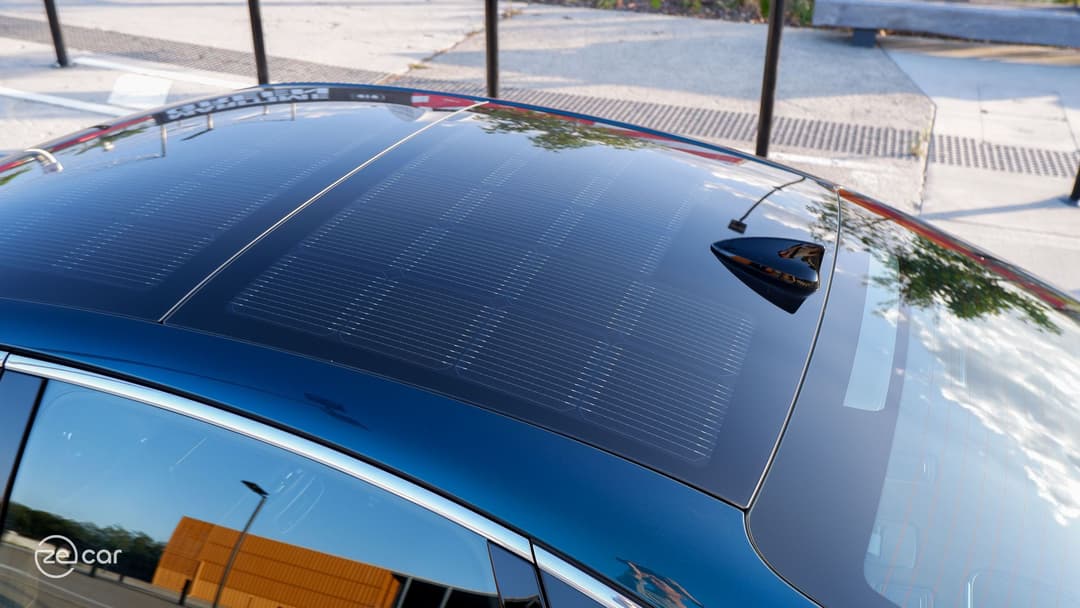
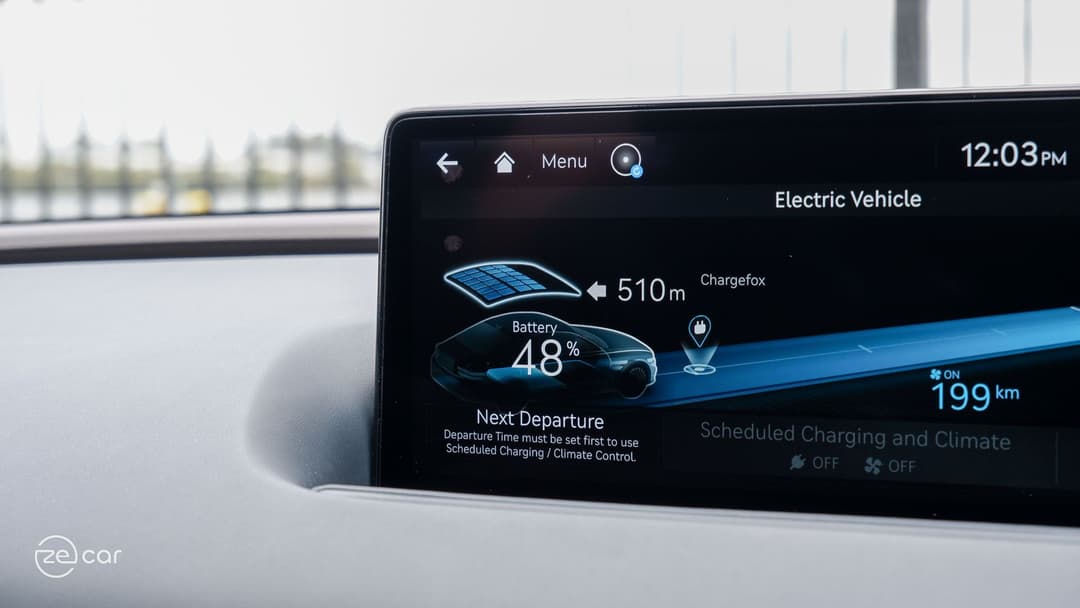
Genesis claims the electric sedan can go up to 520km from a full charge on the stricter WLTP testing cycle based on a 191Wh/km efficiency.
In reality, we achieved a range of 446km and 185Wh/km energy consumption from a mix of urban and highway driving. Keep in mind that we sometimes blasted the air-con to 17-degrees and drove through a torrential rain storm as well.
Yet, the real-world efficiency is still better than the South Korean marque's claim – in line with the smaller Genesis GV60 and Kia EV6 we tested – and is commendable given the electric G80's size and 2325kg tare weight.
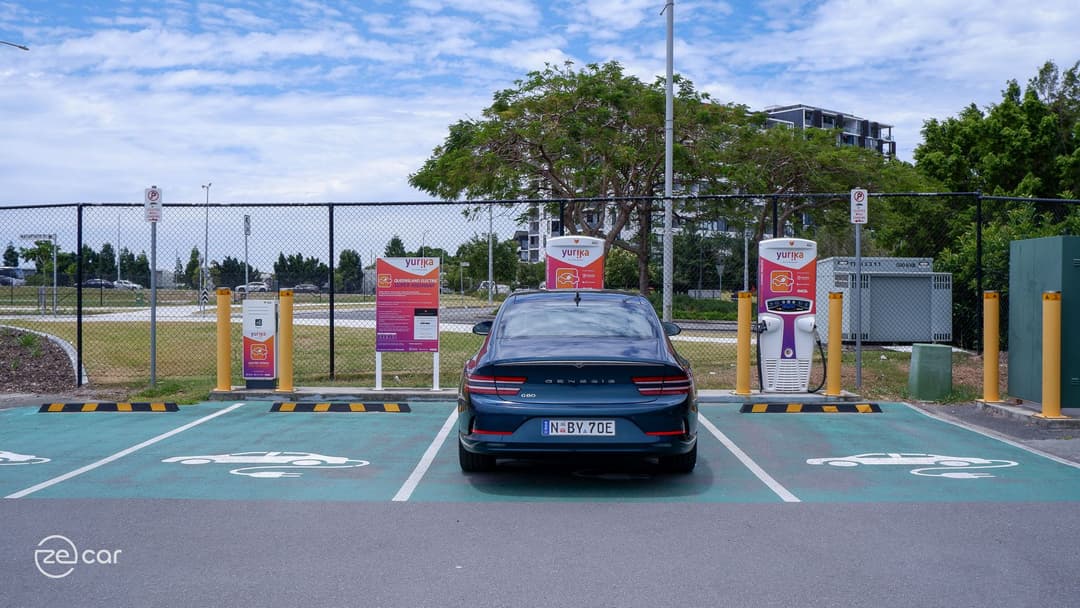
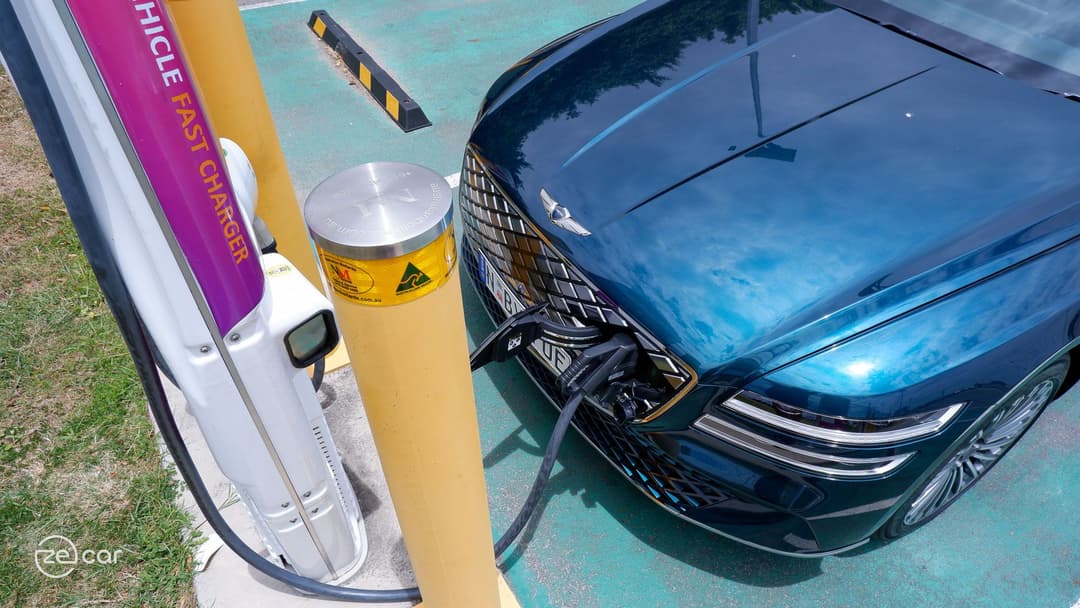
Additionally, the Electrified G80 can bidirectionally charge and power devices with V2L using the included adapter plugged into the exterior charging port. But again, there's no interior V2L plug for passengers to use.
A key advantage of choosing a Genesis electric car is the choice of either a free five-year unlimited subscription to the nationwide AC and DC Chargefox network owned by state motoring clubs or a free 7.2kW AC single phase home wall box charger with standard installation.
These charging inclusions help payback the price premium for opting for the EV even quicker, particularly for businesses and fleets that drive long distances.
Electrified G80 Driving
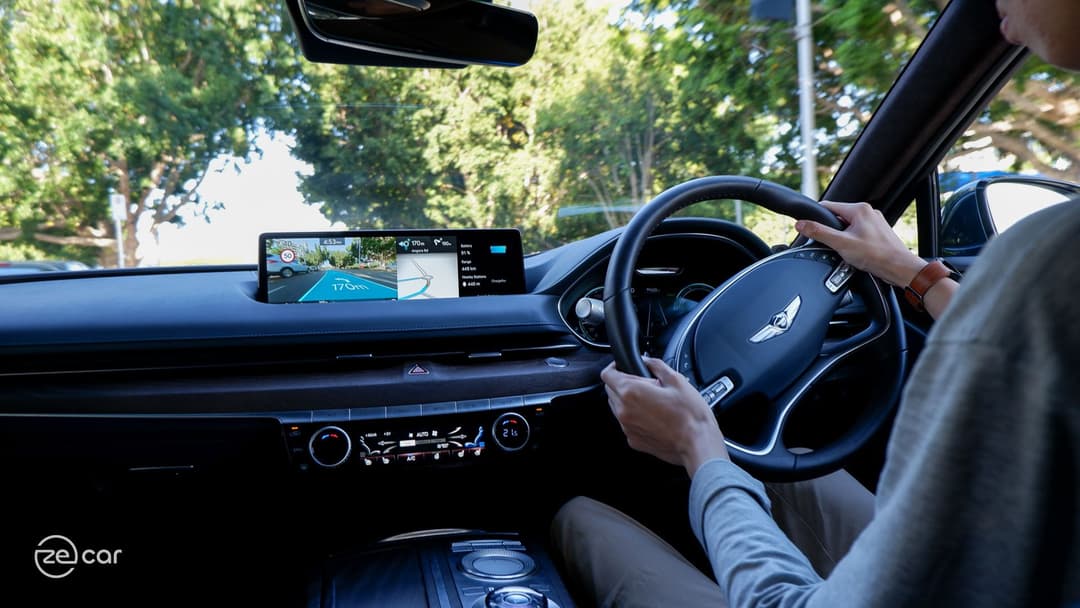
The Genesis Electrified G80 sedan incorporates two electric motors at each axle for all-wheel drive. They output 272kW of power and 700Nm of torque combined, accelerating from 0-100km/h in 4.9 seconds.
This luxury sedan is designed for chauffeuring passengers and even with the added weight of the battery pack, it still offers a comfortable ride while crossing coarser roads, undulations and bumps thanks in part to the camera-based road preview system that pre-emptively tunes the suspension before hitting a speed bump or pothole. But, the ride feels a little soft and floaty at times.
The pure battery-electric powertrain suits transporting passengers the best – it's essentially a silent car with no engine noise nor vibrations to contend with. Outside noises and electric motor whirring are also isolated effectively with minimal wind noise aided by the active noise cancellation.
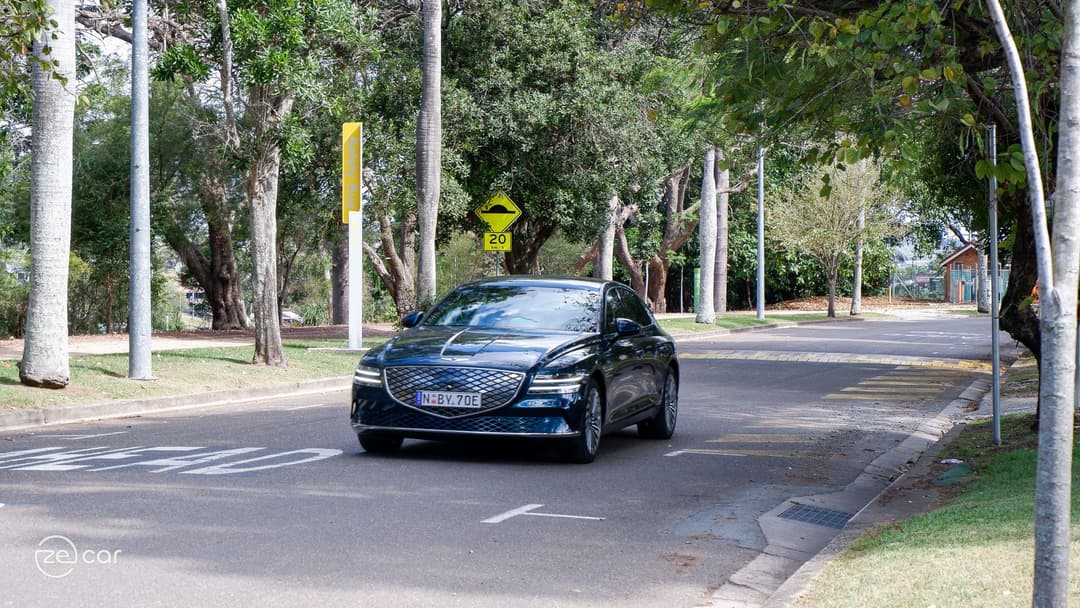
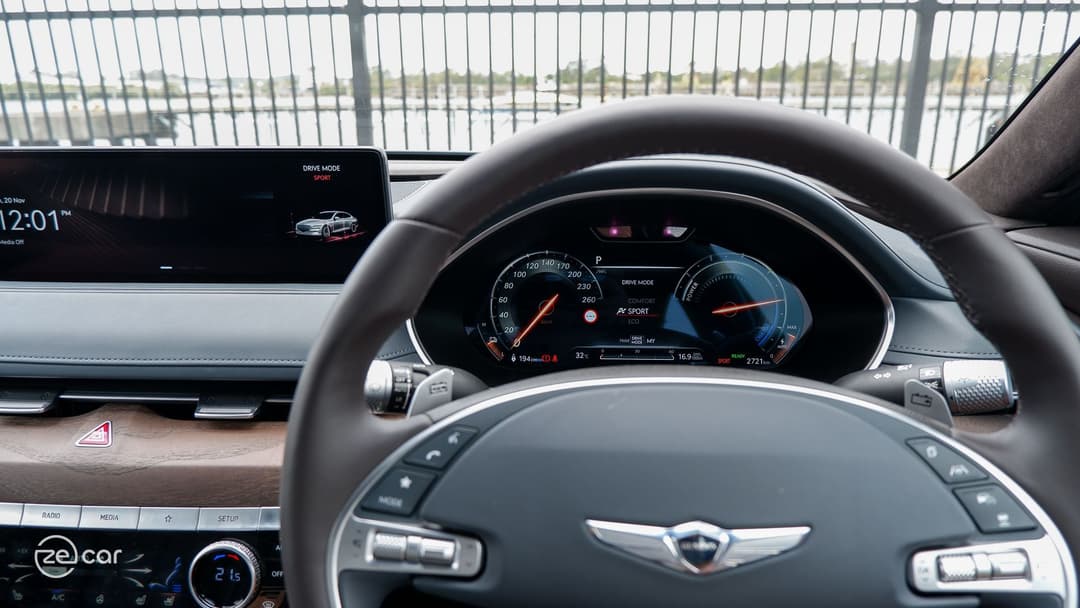
On the other hand, it delivers strong performance with punchy acceleration to compete with the entry-level Porsche Taycan and pre-facelift Tesla Model S 75D, though steering it around corners isn’t as agile due in part to its heavier weight.
Furthermore, at 5005mm long, 1925mm wide and with a 11.64m turning circle, the electric G80 is decent to manoeuvre – the biggest gripe when navigating city car parks is its length.
Fortunately, it provides good all-round visibility with a good-sized rear window despite the sloping roof, small window opening at the C-pillars and wing mirrors placed beside the body to yield a window at the A-pillars.
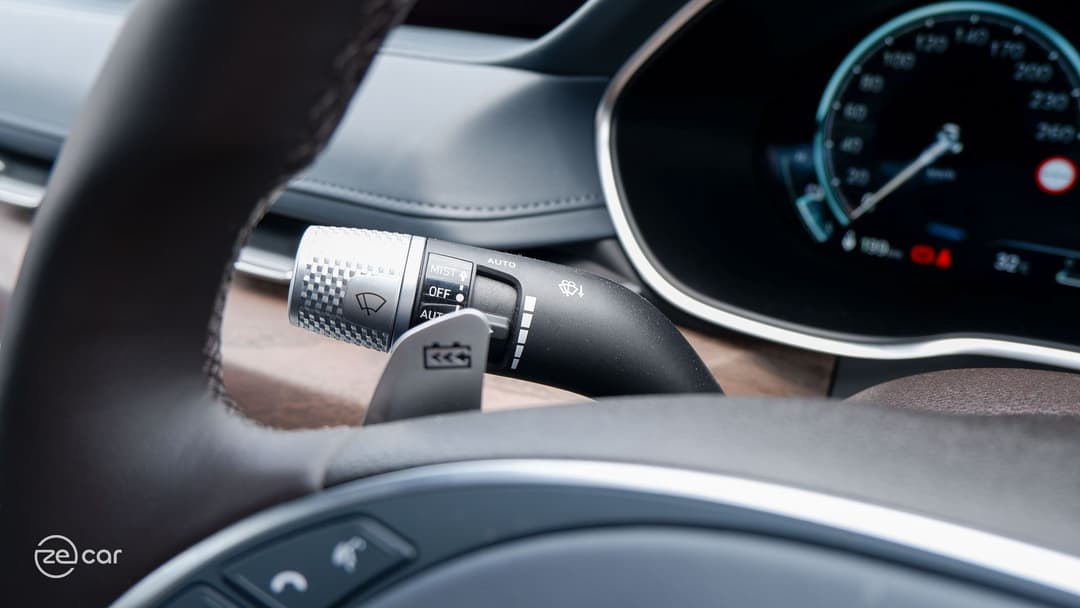
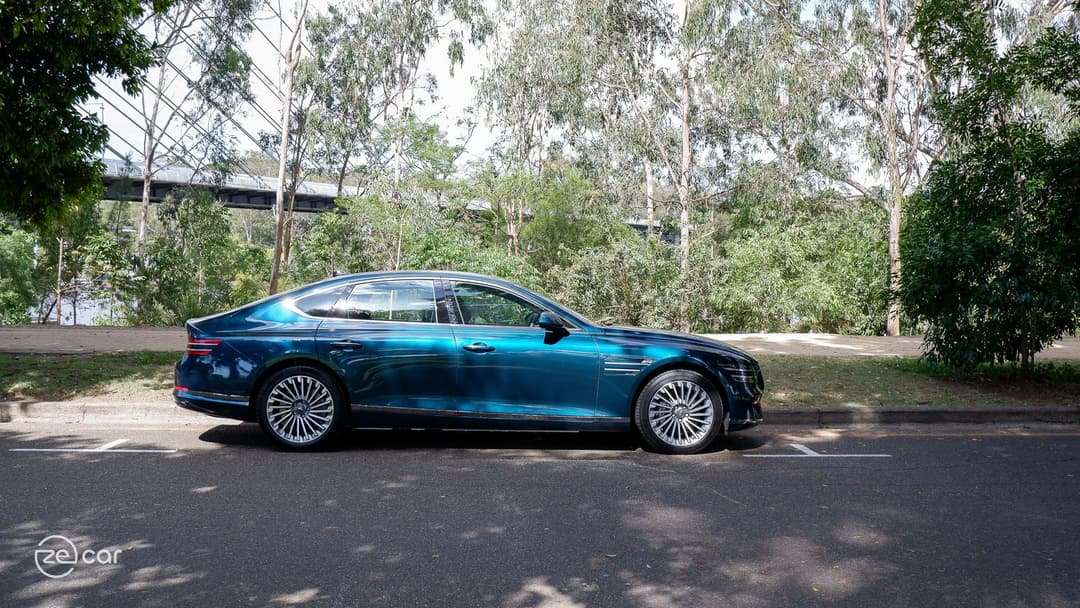
As per all newer Hyundai group EVs, the Genesis electric car has three regenerative braking levels and i-Pedal for one-pedal driving. My pet peeve continues for the latter mode, as I'd like to see the threshold for the brake lights to turn on earlier while recuperating and the system doesn't keep the brake lights on while at a stop.
The South Korean marque includes a five-year, unlimited kilometre vehicle warranty and eight-year battery warranty, with five-years of free servicing included – a key selling point to offsetting the EV upfront price premium faster.
2023 Genesis Electrified G80 Verdict
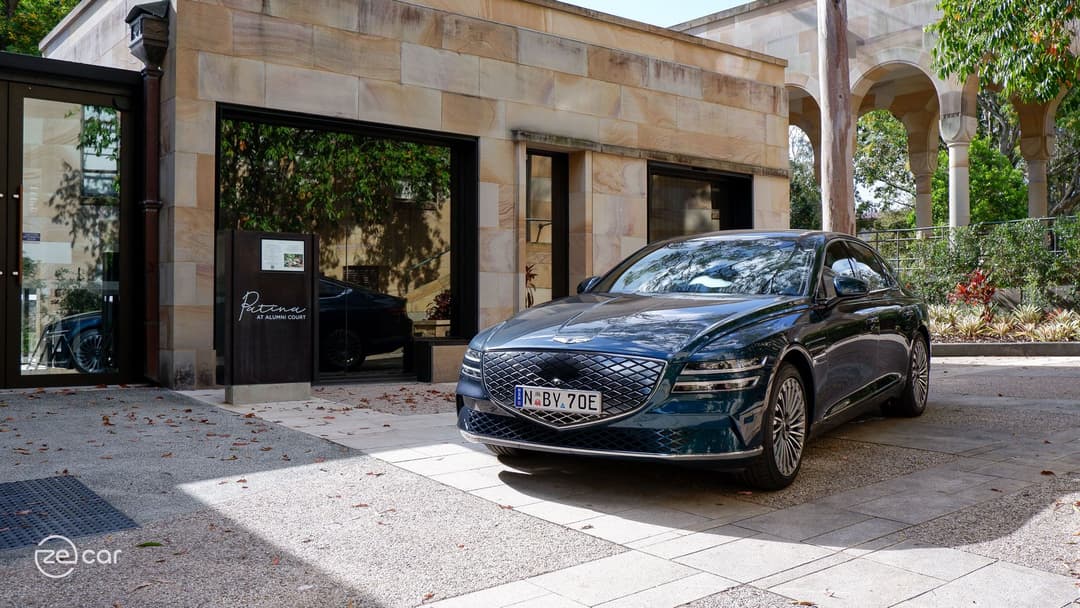
Overall Rating
8.0 out of 10
💰Value for money: 8
📱Tech and safety: 8
📏Size and practicality: 6
⏱️Driving and performance: 9
🔌Range and charging: 8
🛠️Warranty and running costs: 9
The Genesis Electrified G80 is a real sleeper – part silent chauffeur transporter and part sports sedan.
Its overall sleek design arguably wears the Genesis emblem the best, the ride is plush and achieves good real-world efficiency given its size. Uniquely, the G80 is also the only EV with a solar panel roof right now, though it isn’t a key selling point.
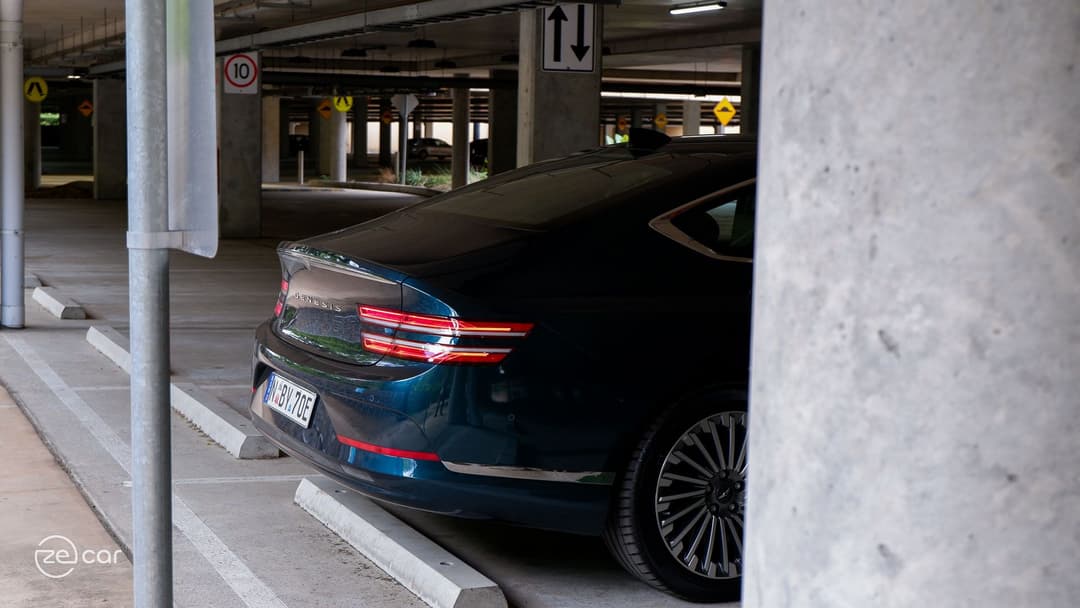
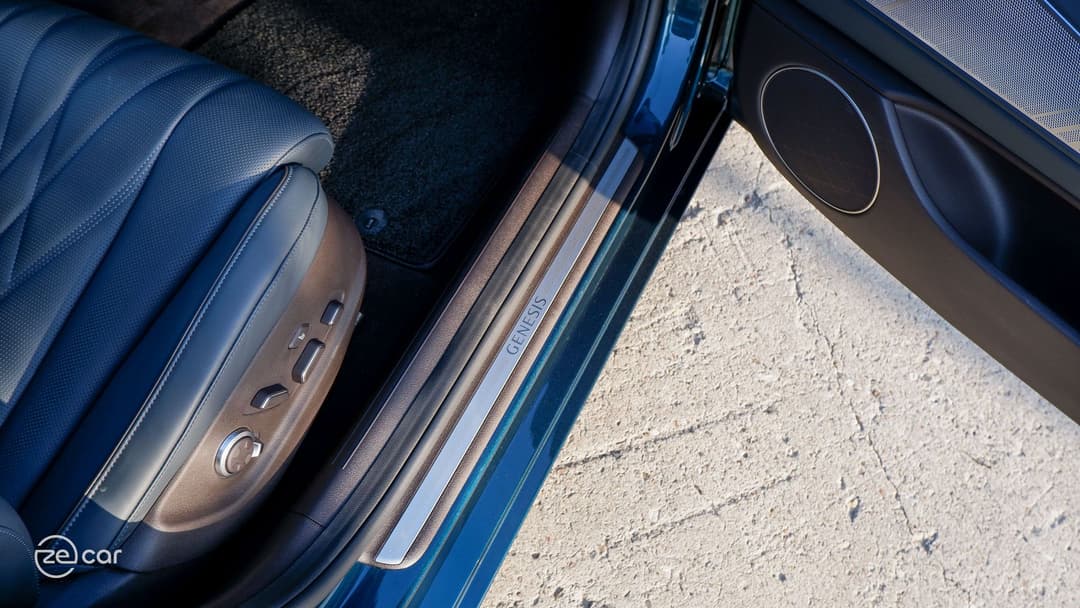
However, the internal combustion engine platform adaptation shows its weaknesses in terms of practicality and there are some oversights for a rear row passenger focused vehicle.
The forthcoming Mercedes-Benz EQE will give a run for its money, while the Porsche Taycan and facelifted Tesla Model S (coming by some time) are more performance-orientated EV sedans.
For those who want to stand out with something different than a three-pointed star, improve their organisation’s ESG and CSR and reduce fleet running costs, the Electrified G80 is worth a look – and the free charging and servicing inclusions will contribute to paying back the EV premium even quicker.
G80 EV FAQs
Datawrappers by Danny Thai
Photographs by Henry Man
About the author
Stay up to date with the latest EV news
- Get the latest news and update
- New EV model releases
- Get money savings-deal




